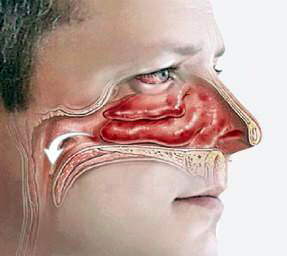 Allergic rhinitis, an allergic disease, was called hypersensitive rhinitis in the past. It is the allergic disease of the nasal mucosa. Clinically, the disease mainly manifests as paroxysmal nasal itch, persistent sneezing, nasal obstruction, and clear nasal discharge, etc. The disease may occur in people of various ages, but is most commonly-seen in people at the age of 15 to 40. Children also suffer from allergic rhinitis. Besides, some of them often have allergic asthma. The incidence of the disease is higher in spring and fall.
Allergic rhinitis, an allergic disease, was called hypersensitive rhinitis in the past. It is the allergic disease of the nasal mucosa. Clinically, the disease mainly manifests as paroxysmal nasal itch, persistent sneezing, nasal obstruction, and clear nasal discharge, etc. The disease may occur in people of various ages, but is most commonly-seen in people at the age of 15 to 40. Children also suffer from allergic rhinitis. Besides, some of them often have allergic asthma. The incidence of the disease is higher in spring and fall.
The pathogenesis of the disease is type I allergic reaction. After the organism breathes in the allergen, it will generate specific IgE which coagulates on the cell membrane of the shallow and superficial mastocyte and basophilic cell of the nasal mucosa. At this time, the nasal mucosa is in a state of sensitization. When the organism breathes in the allergen into the nasal cavity again, the allergen will bridge with the IgE on the surface of the mastocyte and basophilic cell.
This will then give rise to a series of biochemical reactions, resulting in the release of multiple media, mainly histamine. These media will cause the marked historeaction through their receptors in the blood vessel, body of gland and teleneuron of the nasal mucosa, manifested as pale nasal mucosa with edema, increased quantity of nasal discharge, and enhancement of sensitization of the sensory nerve (persistent sneezing), etc.
Category of allergic rhinitis in TCM
Mild allergic rhinitis
Moderate allergic rhinitis
Severe allergic rhinitis